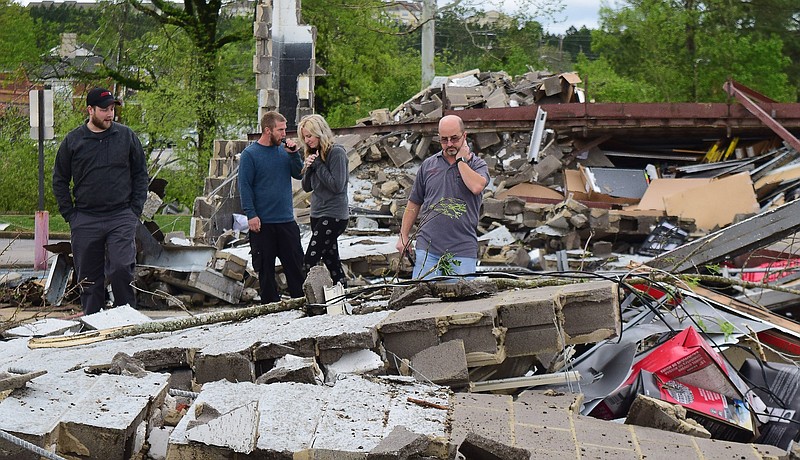The coming days are crucial, we were told. Stay home, we've been cautioned time and again by medical experts, governors, mayors and - well, everyone except the president who can't hold a focused thought beyond his ratings.
But then the storms came.
The storms and tornadoes struck hard all across the South - and particularly in Chattanooga, East Brainerd and North Georgia.
The local residents who were not awakened by falling trees and shattering windows, woke instead to this online headline in the Chattanooga Times Free Press: At least 20 hospitalized, 150 buildings damaged after storms and at least one tornado rip through Chattanooga area."
As the sun rose, that later changed to say: "At least eight dead, dozens hospitalized ... "
East Ridge, East Brainerd, Collegedale and other areas in Hamilton County were badly damaged. The same was true in Cleveland and North Georgia's Fort Oglethorpe. In Murray County, Georgia, news outlets reported six were killed. Adding insult to injury, several families in Marion and Polk county needed rescues from flooding.
Before sunrise, Hamilton County Emergency Management Communications Director Amy Maxwell said county officials were getting conflicting stories of wind 120 or 110 mph, and more than 500 first responders were dispatched to conduct a "grid search" of the hardest-hit areas, going door to door to check on residents.
Times Free Press reporters saw people carrying pets and a few belongings as they walked from the rubble that had been their homes and businesses.
Hamilton County dispatchers took more than 1,300 911 calls. Nearly half of them were related to collapses involving trees, power lines, buildings and vehicles, Maxwell said.
Now we have multiple disasters - and a need to maintain COVID-19 prevention and spread, even as we have large crowds in shelters.
"What we have done is taken a lot of the [personal protective equipment] we had stored and gave them to the command post and made sure first responders were protected and then also provided shelters and assisted living with PPE to make sure everybody is protected," Maxwell told reporters. "We had to put these people somewhere, it was the middle of the night and pouring rain, and we had to take care of them, especially for those most vulnerable people."
Just last week, new Vanderbilt COVID-19 models predicted that only with improved social distancing and a robust increase in testing would we be able to slow the virus in Tennessee enough to see its peak in early- to mid-May.
That's still three to four weeks away.
On the other hand, if the new coronavirus outbreak continues to spread at its current rate, the peak will not come until June, according to the Vanderbilt model.
June.
And with that scenario, more than 5,000 people will be hospitalized statewide at once, stretching hospitals to the brink.
Furthermore, the Vanderbilt modeling warns that if social distancing is lifted prematurely, the virus will overwhelm the state's hospitals by mid-May.
Those were our choices: Stay in and apart to slow the illness so it peaks in May and falls, or don't stay in and watch it swell to wash over hospitals in May and continue rising until June.
Then came the storms.
Now Gov. Bill Lee will again be managing new hydra-headed disasters. And we've seen this movie already. We are still watching what happened in the Nashville area when tornadoes ripped that city just about the time COVID-19 made itself known there. Metro Nashville and the counties around it now make up the hot spot of illness in the state - reporting nearly half of Tennessee's more than 5,000 COVID-19 cases.
Just one day before our Easter storms, and buoyed by the new Vandy study's finding that social distancing was helping, officials said Sunday that state authorities were pumping the brakes and "cautiously optimistic" that an overflow hospital here in the former Alstom manufacturing building may not be necessary to treat the local coronavirus outbreak that already has infected more than 100 people and killed 10 Hamilton residents.
But that was then.
We believe the storms - and the bevy of forced social interactions they have and will cause - makes putting a Chattanooga surge hospital plan on hold a bad plan.
Like everyone, we hope the surge hospital is never needed. But now isn't the time to mothball readiness.

